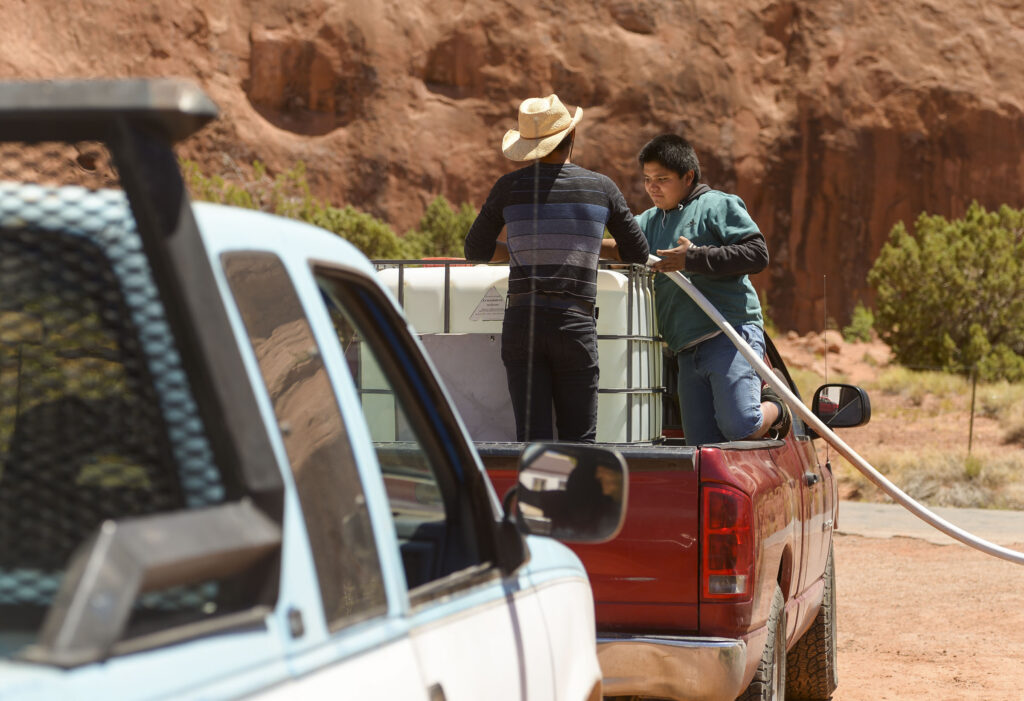It has been almost 40 years since the residents at Love Canal felt frustrated and angry that the newest scientific study found families had abnormal chromosome breakage, “a very rare observation in any population,” according to scientists. Not only does abnormal chromosome breakage indicate a higher risk of cancer, but also genetic damage in adults and children. However, the White House didn’t feel as though these anomalies were significant enough to warrant resident relocation.
That’s when residents decided to really step out of their comfort zone. They invited two EPA officials into their office building and closed the door. “You cannot leave until the White House evacuates us,” they told the officials.
Hundreds of people encircled the building (an abandoned home) and sat down: a non-violent action that received massive media attention. The media defined the action as the first domestic hostage taking, but the residents considered it to be detaining the EPA representatives to protect them from the angry crowd outside. Residents of Love Canal detained the EPA representatives for five hours before letting them go. An ultimatum was sent to the White House – “relocate residents by noon Wednesday or what we did here today will look like a Sesame Street picnic.
Precisely at noon on Wednesday the White House announced that everyone who wished to be moved could leave with federal government funding. Later the polluter Occidental Chemical reimbursed the government. No criminal charges were filed. One of the “hostages” sent a telegram saying, “I miss your oatmeal cookies, best wishes from your friendly hostage, Frank Napal.”
I am sharing this story to say sometimes you must do things outside of your comfort zone. No, I am not suggesting anyone ever detain federal officials. What I am saying is that all too often, leaders are not willing to do things that raise the bar and are risky. Even carrying signs in front of city hall or an EPA hearing is considered to be too risky for them. However, if you play by the rules, you are almost guaranteed to lose.
Why? Because the rules are defined by those in power to control everyday people. There is nothing, for example in a state or our country’s constitution, that says citizens can only speak for three minutes at a public hearing while their opponents generally get plenty of time, loosely disguised as explaining the project/plan.
Today, there is a big push by corporate power to make it a felony to protest even in a nonviolent, peaceful manner. In Texas, some legislature members are trying to push a measure that would subject those who trespass, damage or destroy a facility, or impair or interrupt operations to a third-degree felony including two to ten years in prison. Organizations found guilty of breaking the law would face a fine of up to $500,000 under another provision in the bill.
Finding creative ways around the “rules” is often the only way to make your voice heard, along with applying pressure to those you need to move to resolve the problem. But most of the time, that involves stepping out of your comfort zone. Here are some examples.
- One strategy you can implement is to hold a news conference ½ hour before a public hearing at the same place (or sidewalk nearby). Explain to reporters your objections to the format, the solution/problem the hearing is about and provide the reporters with questions they can ask of elected representatives, the corporation that benefits and offer community people to provide the “human impact” side of the story. Reporters are better prepared when interviewing people with real, targeted questions.
- In Georgia, in the black belt region, the community wanted to speak out against a proposed facility that threatened their air, water and land. However, every time someone did speak out in opposition, their car tires or personal property were vandalized. The message was clear: if you speak up, there will be retaliation. The solution to this problem is to stop speaking out as individuals; instead, speak as a group. At the next public hearing, 250 African American residents filled the auditorium. That alone frightened the corporation because they had never had so many local residents attend. Then, when the first speaker from the residents group went to the podium to speak, he broke into a church hymn. All 250 residents stood up and sang along with him. When the second person went to the podium, she sang a church hymn as well and everyone stood up and sang with her. The tables were turned as the local people began to take back their power and started feeling strong.
There are many ways to take back our democracy and have our voices heard, but simply writing letters, signing petitions, and playing by the rules is not enough. To make real, tangible change, you need to step out of your comfort zone and do something creative, together, and always non-violent.






